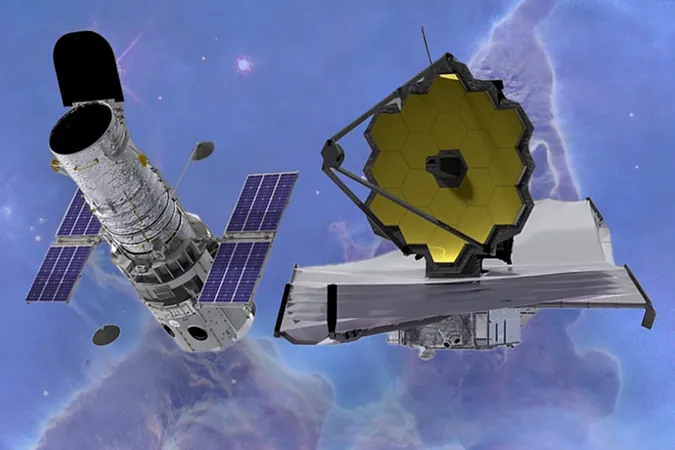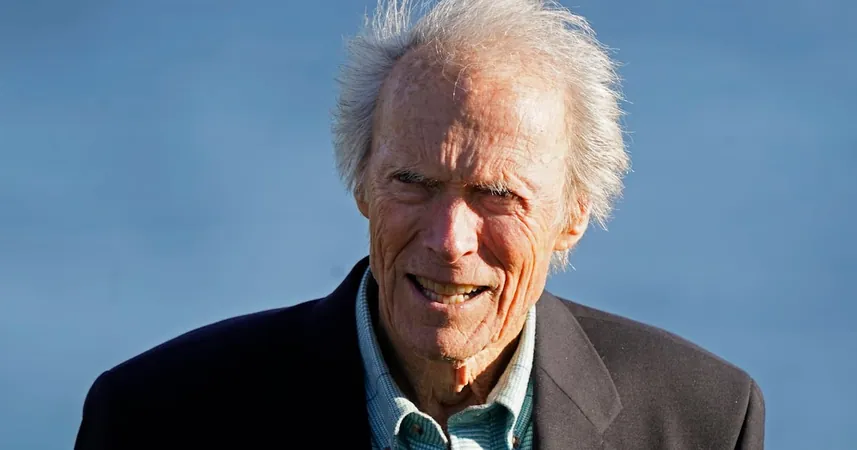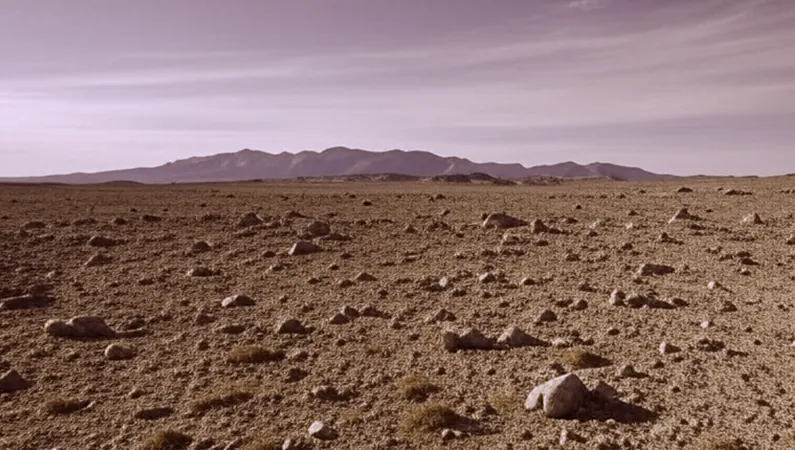
Discover How Space Telescopes Are Transforming Our Understanding of the Universe!
2025-01-20
Author: Emily
Exciting news for astronomy enthusiasts! This month, the Nanaimo Astronomy Society will kick off its 2025 lecture series with a special presentation that promises to change the way we see the cosmos. Chris Gainor, the president of the Royal Astronomical Society of Canada's Victoria Centre and a noted editor of Quest: The History of Spaceflight Quarterly, will take center stage during the society's meeting on Thursday, January 23.
Gainor's lecture will delve into the groundbreaking impacts of the Hubble Space Telescope, which has been operating for an astonishing 35 years. He will also explore the remarkable findings from the James Webb Space Telescope, which, in its three years of operation, has opened new doors into the depths of space and time.
"The James Webb has been a major milestone in space exploration, enabling us to look further back into the universe’s history, closer to the time of the Big Bang," Gainor explained. However, the discoveries made by Webb have been quite unexpected. "Historically, we believed that galaxies formed later in the timeline of the universe. But the data suggests that giant galaxies emerged much earlier than we anticipated, prompting a re-evaluation of what we know about cosmic history," he added.
While comparing the two iconic telescopes, it's notable that the James Webb Space Telescope is significantly larger and operates from a stable position about 1.5 million kilometers away from Earth, unlike Hubble, which orbits our planet. Webb is specialized in capturing infrared light, allowing it to observe the earliest formations of the universe as their light redshifts due to the expansion of the universe. Gainor emphasized, "This ability to detect infrared wavelengths means Webb can uncover celestial objects that are beyond Hubble’s reach, bringing us closer to understanding the universe’s beginnings."
Both telescopes are also crucial in the ongoing search for exoplanets—planets outside our solar system. Gainor noted a fascinating aspect of this discovery journey: "When Hubble was first launched in 1990, we had no knowledge of exoplanets. Today, with support from Earth-based telescopes and missions designed specifically for this purpose, like the Transiting Exoplanet Survey Satellite (TESS) and the Kepler Space Telescope, we know that millions of exoplanets exist in our galaxy alone."
The search continues for planets similar to Earth, with Webb aiding our quest to analyze the chemical compositions of their atmospheres. Gainor shared, "So far, while we've identified some planets with atmospheres, we haven’t yet found an Earth-like planet. It appears that most stars have accompanying planets, including some rogue planets that drift through space unbound to any star, making this a thrilling yet challenging search—almost like finding a needle in a haystack!"
Join Gainor as he shares insights from this thrilling frontier of space science!
The meeting will occur over Zoom on January 23 at 7 p.m., and anyone interested in the mysteries of the universe is encouraged to join. For additional details, visit www.nanaimoastronomy.com. Don't miss this chance to expand your understanding of the universe!









 Brasil (PT)
Brasil (PT)
 Canada (EN)
Canada (EN)
 Chile (ES)
Chile (ES)
 Česko (CS)
Česko (CS)
 대한민국 (KO)
대한민국 (KO)
 España (ES)
España (ES)
 France (FR)
France (FR)
 Hong Kong (EN)
Hong Kong (EN)
 Italia (IT)
Italia (IT)
 日本 (JA)
日本 (JA)
 Magyarország (HU)
Magyarország (HU)
 Norge (NO)
Norge (NO)
 Polska (PL)
Polska (PL)
 Schweiz (DE)
Schweiz (DE)
 Singapore (EN)
Singapore (EN)
 Sverige (SV)
Sverige (SV)
 Suomi (FI)
Suomi (FI)
 Türkiye (TR)
Türkiye (TR)
 الإمارات العربية المتحدة (AR)
الإمارات العربية المتحدة (AR)